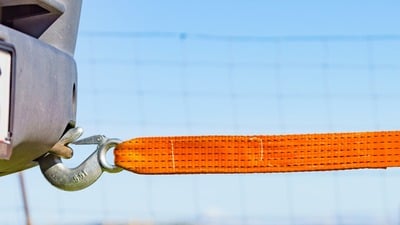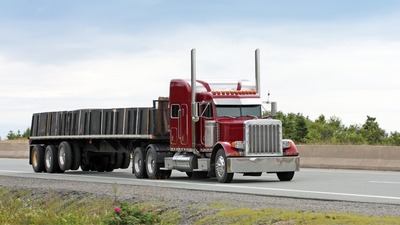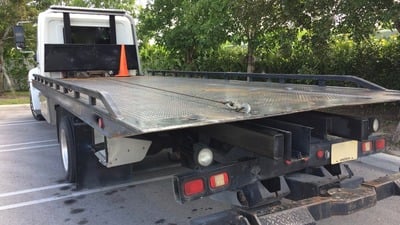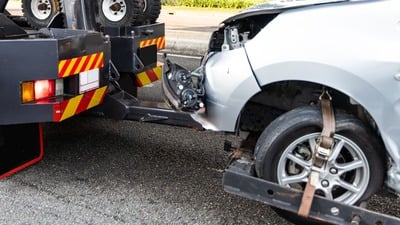Introduction to Using Tow Straps in Winter
When winter hits Detroit, roads become treacherous. Snow and ice can trap cars in no time, making tow straps an essential tool for any driver. But using them wrong can be more dangerous than the snow itself. Here's the scoop on using tow straps safely in winter. First, get the right strap. It must be strong enough to pull your car without breaking. Look for one rated for the weight of your vehicle. Hooking it up properly is crucial. Attach the strap to the tow points designed for this job on both vehicles. Do not, under any condition, hook it to bumpers or parts that can easily break. When you start pulling, do it gently. A sudden tug can damage both cars or worse, hurt someone. And remember, tow straps are for short distances and to get a vehicle unstuck, not for towing on a highway. Be smart, stay safe, and winter driving won't get the best of you.
Understanding Tow Straps: Types and Materials
Tow straps. You hear a lot about them, especially when you're stuck in deep snow or mud. Not all tow straps are the same. You got options. Let's break it down, simple and straightforward. Nylon and polyester, these are your go-to materials. Nylon is stretchy, giving you that extra "snap" to help pull a vehicle out. Polyester, on the other hand, doesn't stretch much, making it more predictable and safer in certain situations. Now, types. You've got the recovery strap and the tow strap. Recovery straps are for yanking a vehicle out of a bind. They're the stretchy ones, made of nylon. Tow straps, those are more for towing a vehicle on smooth surfaces, nice and steady. Polyester’s your friend here. Choose wisely. The right strap and material can mean the difference between getting out and staying stuck.
Preparing Your Vehicle for Tow Strap Use in Winter
Before you even think about attaching a tow strap to your car during a harsh Detroit winter, there's some prep work that needs doing. First off, make sure your vehicle is ready to handle what's about to happen. Check that your towing points are solid. These are usually located on the frame of your vehicle but consult your owner's manual to be sure. Rust is a real villain here, more so in winter, so if those points look rusty or weak, get them fixed before proceeding. Next, it's vital to ensure your vehicle's battery is fully charged. Cold weather is notorious for sucking the life out of batteries, and the last thing you need is your car dying mid-tow. Also, double-check your brake system and tires. Towing with worn-out brakes or tires is like trying to play hockey with a broom—just don't do it. Lastly, have a quick look at your lights. In winter, visibility is everything, and making sure other drivers can see your vehicle's signals can prevent a bad day from turning worse. Once you've ticked off these steps, you're more or less ready to use that tow strap safely. Remember, the key here is making sure your vehicle is as prepared as you are.
Essential Tips for Safe Tow Strap Usage
When it's freezing outside, and your vehicle is stuck, a tow strap can be a lifeline. But mishandling this simple tool could turn a rescue into a disaster. Here's how to use tow straps safely. First, check the tow strap for any damage before use. A frayed or weakened strap can break under pressure. Always attach tow straps to the vehicle's designated recovery point, not to bumpers or axles; this mistake can lead to damage or injury. Use a strap with a capacity that exceeds the weight of the vehicle being pulled. It's more power than you think you need, but it's crucial for safety. When pulling, start slowly. Sudden tugs can damage both vehicles and pose a risk to bystanders. Keep a straight line; angles increase the chance of something going wrong. Finally, never use a tow strap for lifting. It's for horizontal pulls only. Remember these tips to ensure a safe rescue from the clutches of a Detroit winter.
How to Connect Tow Straps Correctly
To avoid turning a rescue mission into a roadside disaster, connecting tow straps correctly is crucial. First off, check your tow straps for any wear and tear. Never use a frayed or damaged strap. Now, find the towing points on both vehicles. These are usually marked and located near the front and back bumpers. Never attach a tow strap to any part that’s not designed for pulling; that's asking for trouble. Once you've found the towing points, loop the strap through the point on the vehicle being towed. Then, connect the other end to the towing vehicle. Make sure the hook's latch is closed and secure. Before you start towing, ensure there's a slight tension in the strap to avoid sudden jerks. Remember, slow and steady wins the race; never tow at high speeds. Following these simple steps will keep you and your vehicle safe.
Avoiding Common Mistakes When Using Tow Straps
When the snow hits hard, and Detroit turns into a winter wonderland, tow straps become a lifeline for many. Yet, mistakes in their use can turn a rescue operation sideways fast. First off, never, and I mean never, hook a tow strap to any part of a vehicle that’s not designed for that kind of load. We're talking bumpers, axles, or steering rods—these are big no-nos. Serious damage can happen, both to the car and potentially to people nearby.
Next, always check your tow strap before use. Winter can be harsh, and wear and tear can weaken your strap without you even knowing. Look for any signs of fraying, cuts, or excessive wear. If it looks questionable, it's time for a new one.
Also, keep in mind the weight rating of your tow strap. Overloading it is asking for trouble. It’s simple: know the weight of the stuck vehicle and make sure your strap can handle that plus some. It's all about not pushing your equipment beyond its limits.
Finally, keep clear. When pulling a vehicle out, make sure everyone stands away from the direct line of the tow strap. If that strap or its connection points fail, it can whip back with deadly force. Safety first, always.
In short, treat your tow strap with respect. Use it right, and it'll get you out of many a bind. Use it wrong, and well, it's not something you want to find out the hard way. Stay smart, stay safe.
Tips for Efficient Use of Tow Straps in Snow and Ice
When using tow straps in the snow and ice, you gotta know what you're doing to avoid trouble. First off, make sure you're using a strap meant for towing, not just any old rope. These are made tough to handle the pull. Always check your tow strap for any wear or tear before using it. If it looks beat up, it's time for a new one. Before you hook up, clear any snow or ice from around both vehicles' towing points. This ensures a solid hookup. When you're ready to pull, do it slow and steady. Sudden yanks can damage both vehicles or even cause the strap to snap. Keep the towed vehicle in neutral to avoid any nasty surprises. And yeah, communication is key. Make sure you and the other driver are on the same page before you start moving. Following these simple tips can make towing in snow and ice less of a headache and keep you safe out there in the harsh Detroit winters.
What to Do If the Tow Strap Fails
If your tow strap fails, don't panic. This can happen due to extreme weather conditions or wear and tear. First off, make sure you're safely off the road to avoid any oncoming traffic. Check the strap for visible damage and attempt to determine the cause of failure. If the strap is clearly worn or ripped, it’s a no-go. Time to use a backup if you have one. Always carry an extra tow strap, especially during harsh Detroit winters where the likelihood of getting stuck is higher. If you don’t have a spare, call for professional roadside assistance. While waiting, keep your hazard lights on to alert other drivers. Stay warm inside your vehicle if possible. Remember, safety first—never try to improvise with unsuitable materials as a tow strap substitute. It's also wise to regularly check your tow straps for signs of wear and to understand their weight limit before use. Better safe than sorry.
Maintenance and Care for Tow Straps After Winter Use
After the harsh Detroit winters, your tow straps need some TLC to stay in good shape. Salty roads and wet conditions can wear them down faster if you don't clean them properly. Here's the deal. Rinse your tow straps with warm water to wash off salt and dirt. Don't use harsh chemicals; they can weaken the fibers. Let them dry completely in a spot that's not directly in sunlight because UV rays can damage the straps. Store them loosely coiled in a dry, cool place. Avoid tossing them in the back of your garage where they can get damp or be exposed to chemicals and oils that might spill. Inspect them before and after each use for fraying, cuts, or any signs of wear. If you spot any damage, it's time to replace the strap. Safety first, always. Remember, taking care of your tow straps means they'll be ready to go when you need them next winter, saving you time, money, and hassle.
Summary and Best Practices for Tow Strap Safety in Detroit Winters
In Detroit's brutal winters, knowing how to use tow straps safely is crucial. First and foremost, always check the strap for damage before use. A single fray can mean the difference between a safe tow and a dangerous situation. Make sure both cars are in neutral and that the strap is correctly attached to the towing points—not the bumper. Slow and steady wins the race; sudden tugs can cause more harm than good. Keep communication open with the driver of the other vehicle. Use flashers and, if possible, work in daylight or well-lit areas. Remember, tow straps are for short distances and not a substitute for a tow truck if the vehicle is severely damaged or if you're not confident in the process. Stay safe and keep these practices in mind to navigate the winter roads of Detroit with confidence.





